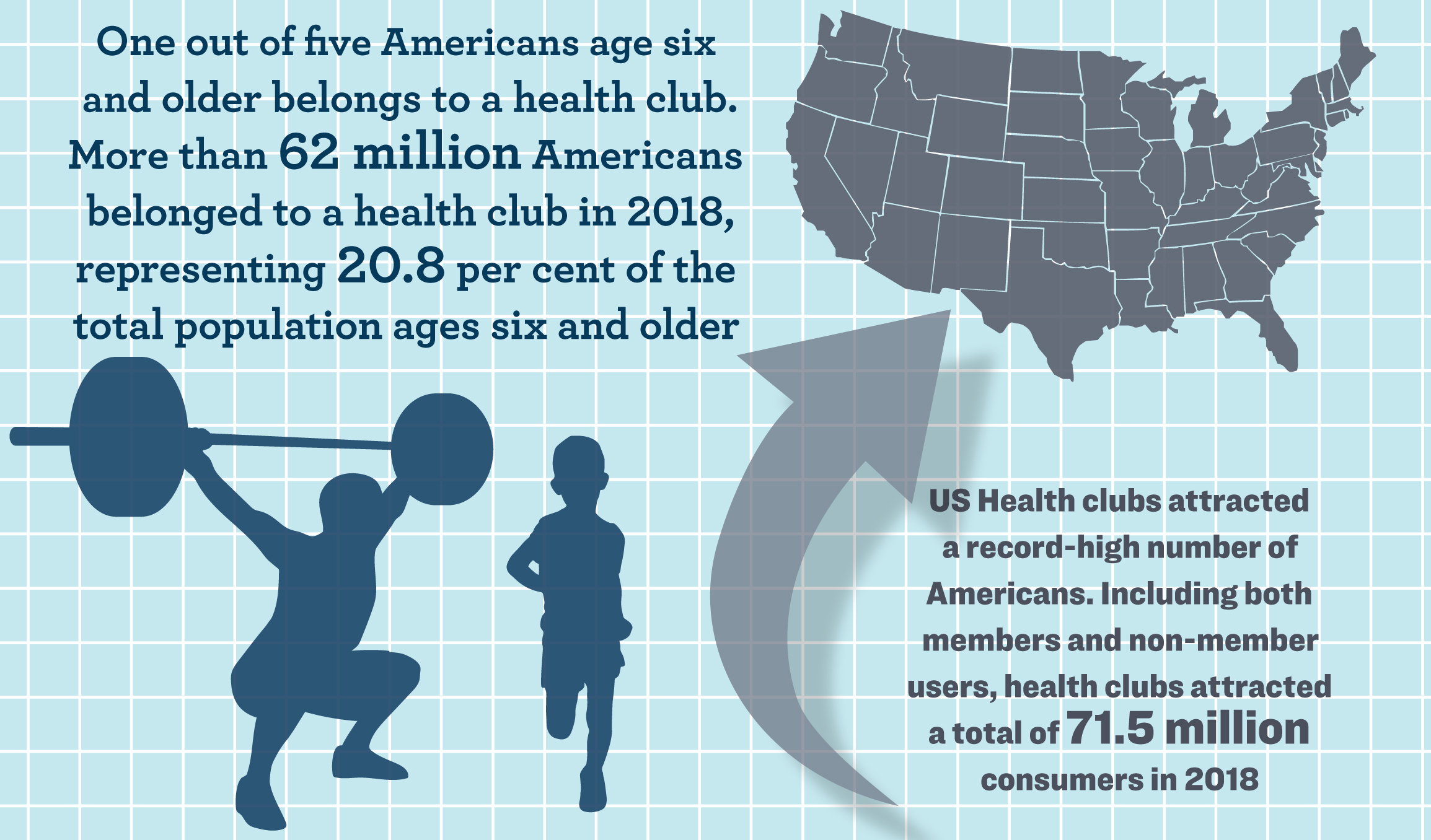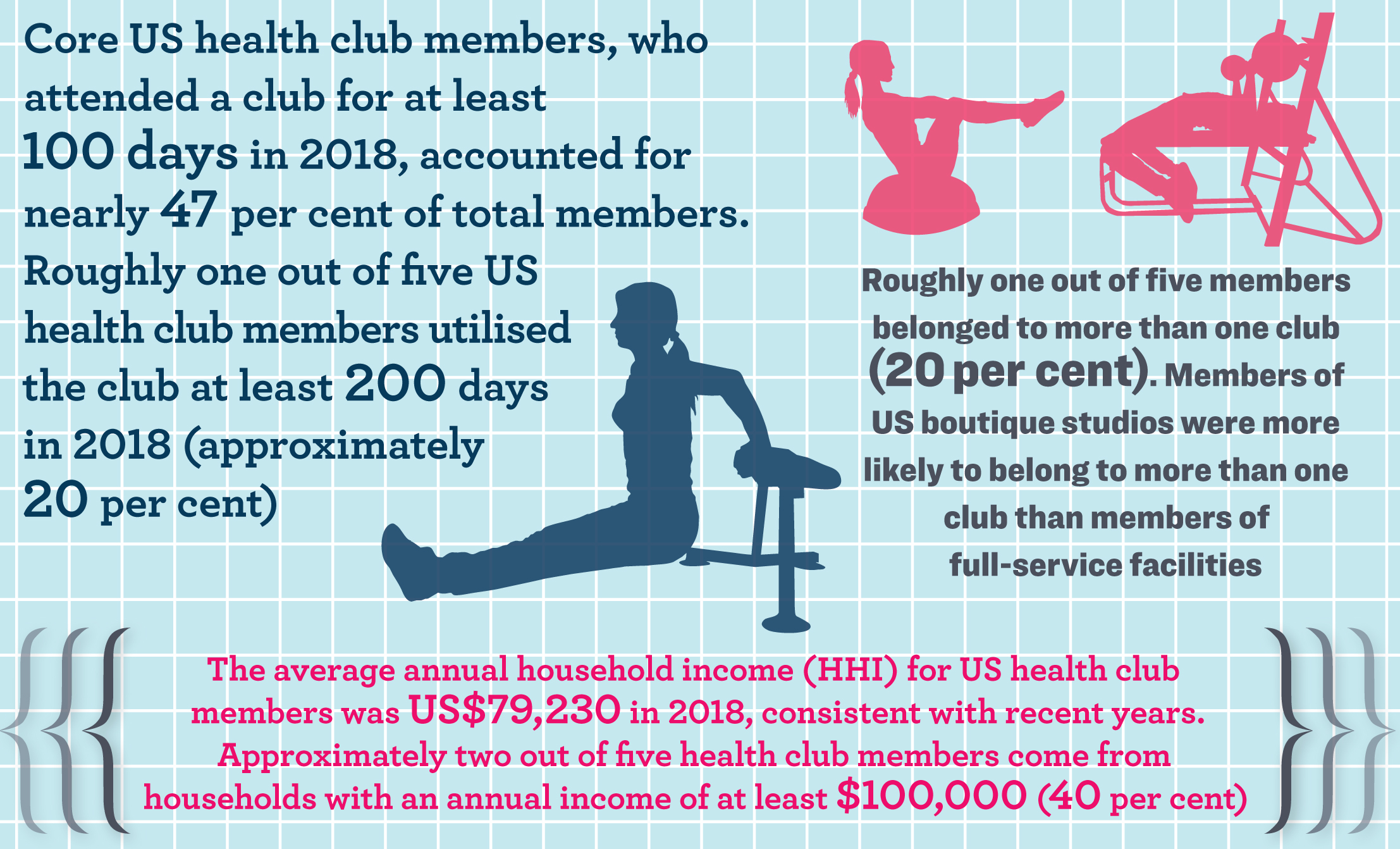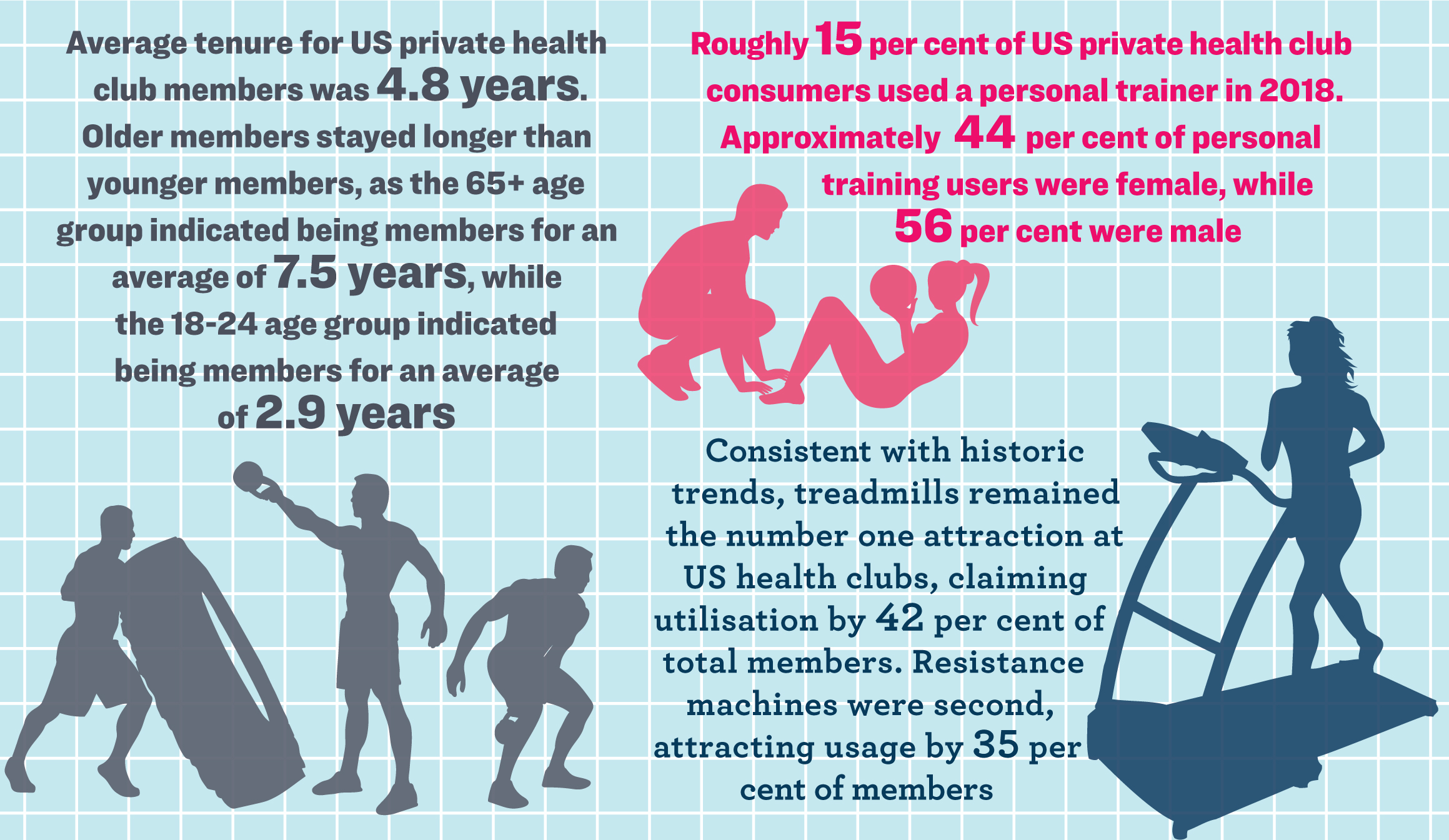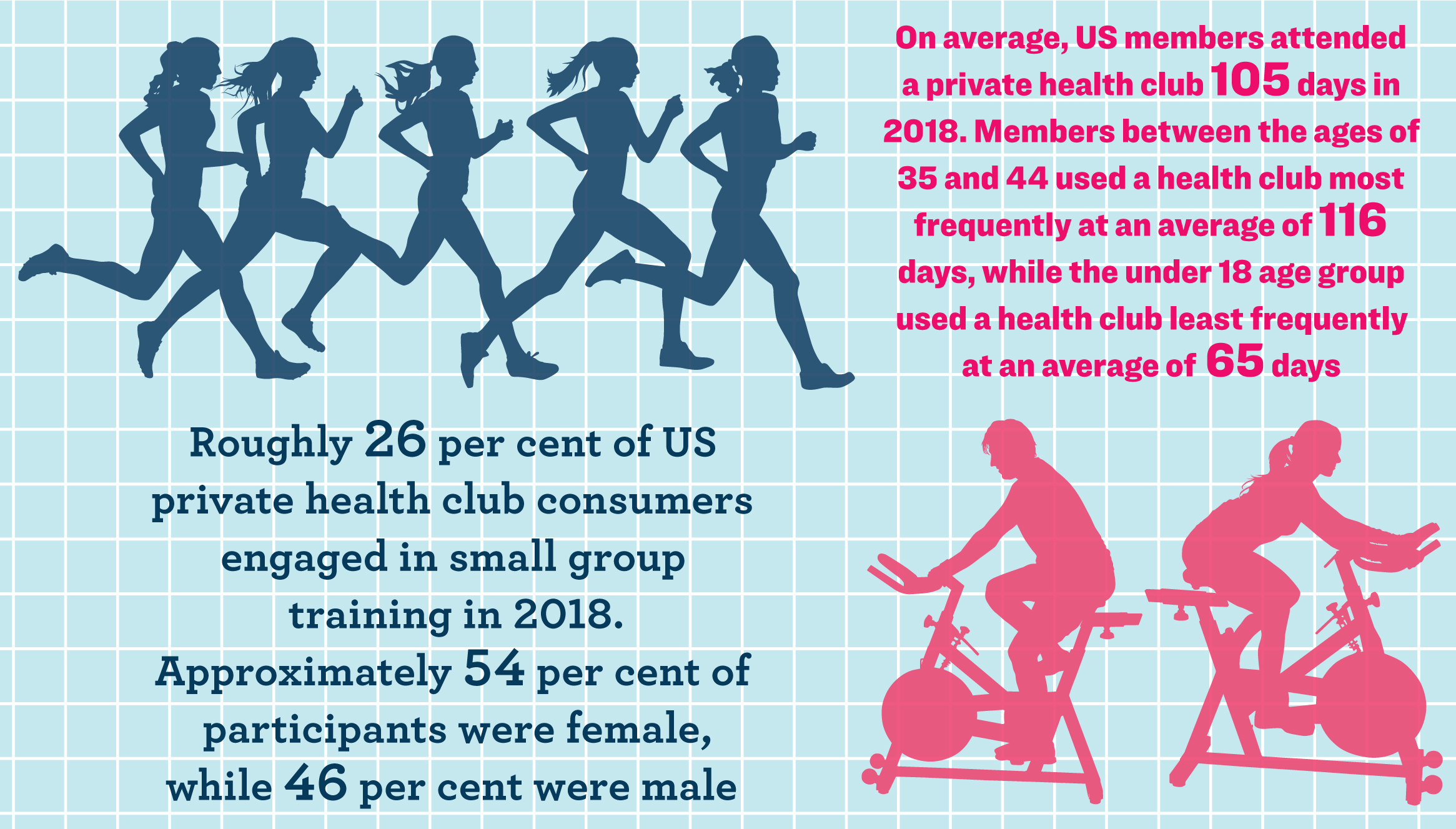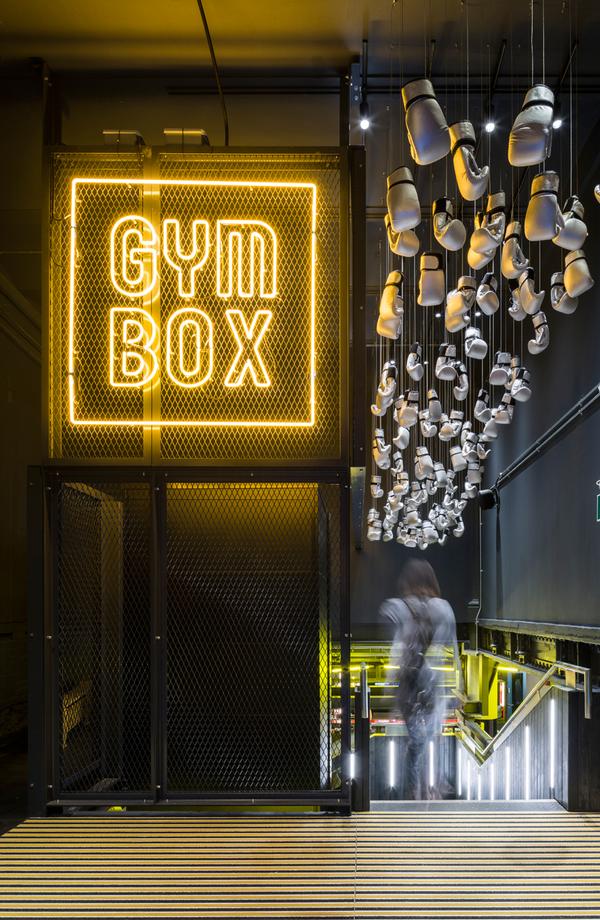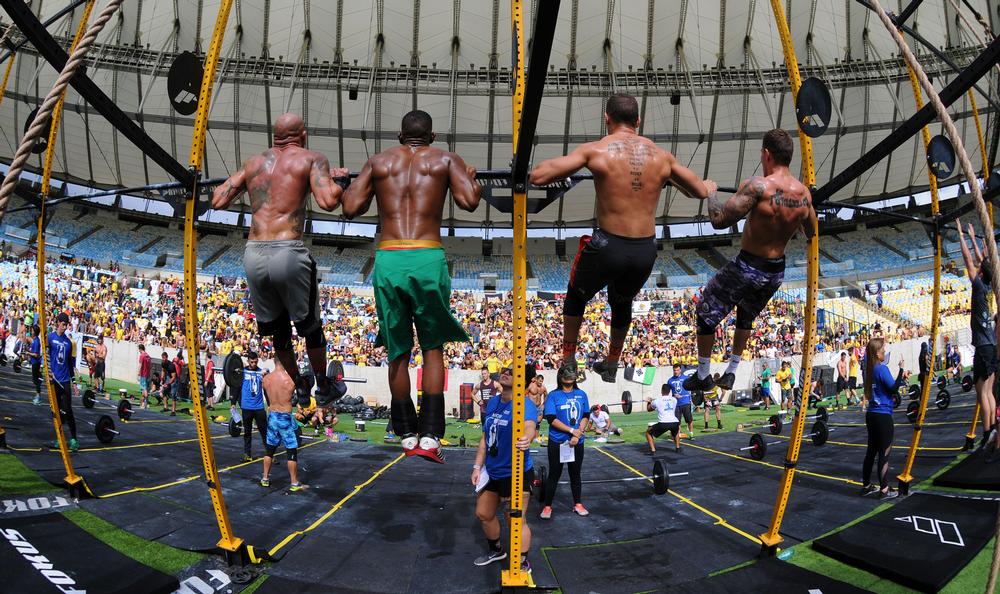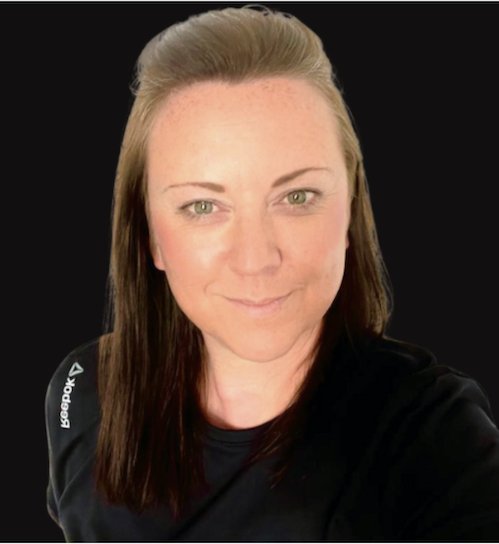In order to adequately recruit, serve, engage and retain health club customers and members, it’s crucial to understand everything about them – their needs, their wants and their behaviours.
IHRSA’s annual Health Club Consumer Report 2019 is based on a nationwide sample of more than 20,000 interviews and provides demographics and health, sports, and fitness participation data on US health club consumers.
Review your business model
At this moment in time, fitness facility operators, especially those in the fitness-only category, find themselves competing in an industry segment that’s dominated by discount operators (75 per cent charge less than US$25, and 32 per cent charge less than US$10 a month).
If your present business model is fitness-only (equipment, group exercise studios and locker rooms), then chances are most of your competitors will be in the low-price game, and your existing and future members will frame their buying decision around the lowest price.
Stay in the game
Consequently, if you plan to continue to operate a fitness-only model in your business, your options include:
• Lower your price and add a little extra. Rather than go head-to-head at $10, try $15 to $18, and then offer a few classes, some virtual classes, and possibly offer fee-based small group training.
• Continue to operate at your present price point, eg, $30 to $40, but differentiate your offering. Create a speciality, such as a genre of group classes, small group training or coaching, that none of your competitors is offering.
• Move up the chain. Add physical and programming amenities known to denote value and a higher price point. For example, you could add a court for POP tennis and pickleball; add a speciality studio and theme it; create more tribal programming, or partner with another small business to incorporate a custom bundle of services with higher perceived value into your offering.
Pursue ‘odd’ and ‘weird’
Dr Seuss notably quipped: “You have to be odd to be number one.” What he meant was that reaching the top and, equally importantly, remaining at the top, requires a penchant for being a little different from the rest.
“Odd” refers to your business’ value proposition and whether it offers consumers and members something unique, innovative, and relevant – rather than the same old same old.
Dr Seuss also said: “We’re all a little weird and life is a little weird, and when we find someone whose weirdness is compatible with ours, we join up with them and fall in mutual weirdness…”
What the doctor ordered speaks to building a value proposition that appeals to one or a few weird audiences. Many successful boutique studios have taken this approach to crafting their value proposition. Gym Box in the UK is a premium operator that has taken a different approach and, in so doing, carved out a distinctive position for itself in the marketplace.
Just remember, being ‘odd’ also requires innovation and – importantly –having relevance to the audience you pursue.
So, what does it take to foster a value proposition and culture takes you to number one and enables you to leverage ‘weird’?
Find your tribe
Consider selecting single or multiple niche audiences to serve, and craft your value proposition and culture to be relevant to them. Study your marketplace, talk to your existing members and, most importantly, search for un-served/under-served groups.
• Deliver your offering differently. No one says you have to operate in the same way as your competitors.
Maybe offer club access via bundled packages instead of monthly subscriptions.
How about investing more in technology and becoming the most tech-savvy fitness business in the market?
• Be a 2.5 percenter. Two-and-a-half percent refers to the percentage of businesses that are real innovators. These are businesses that pursue innovation or are willing to adopt business practices and technology early on, typically way ahead of the competition. For example, why not try a ‘freemium’ approach to your business model, similar to that used in the gaming industry, in which you offer the basics for free and then charge extra for upgrades and add-ons.
• Go back in time or shift into the future. CrossFit, possibly without even knowing it, built a business proposition around some of the clubs of the mid-1800s, in which gymnastics and calisthenics were the core of the programme. There are other models from olden times that would still work today.
Conversely, you could go the opposite route and create a high-tech virtual experience (ie virtual reality, streaming mobile content, virtual check-in, etc) supplemented by human contact.
Find out more at: www.ihrsa.org/publications









